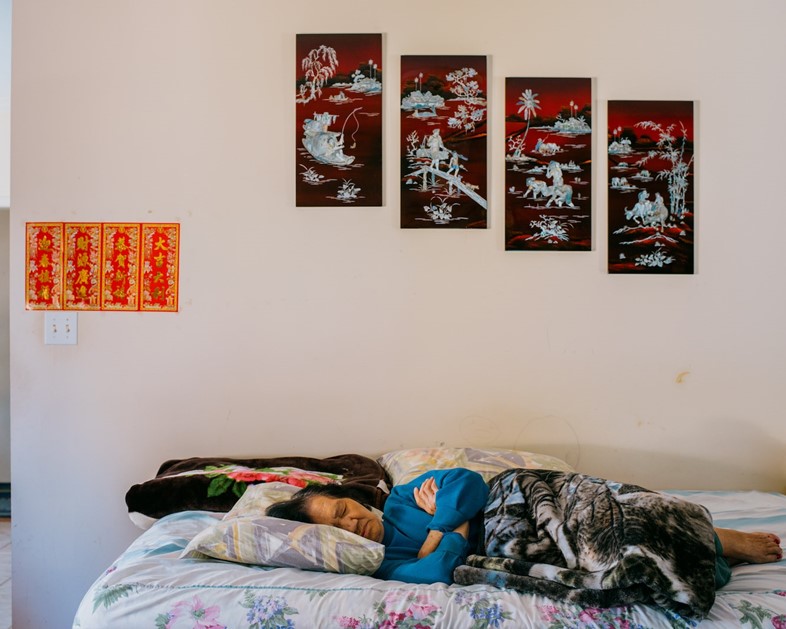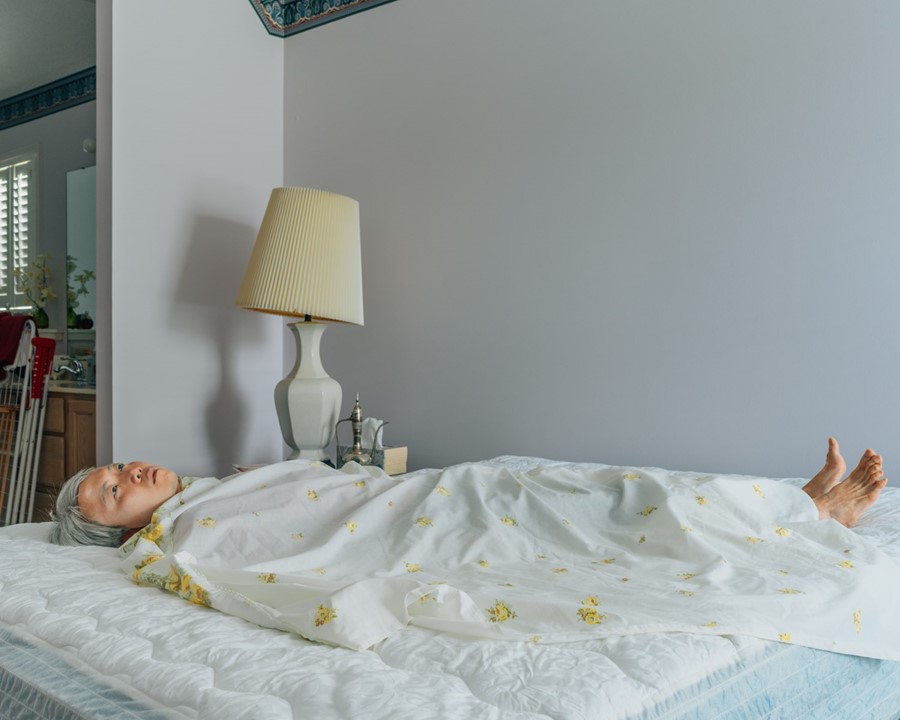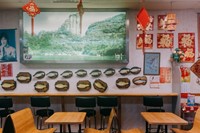“My work is about how much the landscape has been unkind to immigrants,” says Tommy Kha of his latest photo project, which captures the Asian diaspora in America with a surreal edge
In June 1875, police raided Edouard Buguet’s studio on Boulevard Montmartre in Paris. The photographer was on trial for fraud. Claiming to be entranced by spirits, Buguet shot portraits of the living that could seemingly capture the visiting ghosts of the dead. “My children, like myself, thought the likeness perfect,” one sitter testified. “They cried, ‘It’s mamma!’” But Buguet confessed to double-exposing his plates with images of dummies or studio assistants dressed up in costume to resemble whoever the client wished to see. In his studio, there were false beards, shrouds, two life-sized mannequins, and 300 faces glued onto card.
It’s the cut-out ghost of spirit photography that haunts Tommy Kha’s portraits in Ghost Bites, his new solo exhibition at Baxter St at the Camera Club of New York. But the ghost is himself. It’s there in the room with his mother, partly concealed by a curtain. Or it’s placed like a mask on the face of his grandmother, lying flat in a sheet like a shroud. “I’m interested in the time when spirit photography was a really big part of public consumption,” Kha tells AnOther. “Photography is about haunting. It’s about how much of the past still plays out in our contemporary landscape.”
In 1983, Kha’s mother fled Vietnam in the night. His grandmother, who later would join her, had sewed money into the waistband of her clothes. “That act really sets the tone of how I imagine my work,” Kha says in his accompanying monograph Half, Full, Quarter, published by Aperture and the 7G Foundation. “I’m weaving stories. I’m mapping these pieces of the Asian diaspora.” Brought up by these women in Memphis, Tennessee, Kha aims to draw out the “darker parts of the American self”. “My work is about how much the landscape has been unkind to immigrants,” he explains. “It’s about exorcising my family’s past.”
Yet for Kha, his portraits of family are “half self-portraits”: “I tell their stories to figure out my own,” he explains. “It’s very much, ‘How do I arrive at my own representation?’” This involves breaking down western misconceptions of the Asian diaspora and its imagery. “Western ideas of the east have created a fiction,” says Kha, “and you can’t separate that from the western invention of the camera itself. A lot of the ways photography was introduced to the east was through colonial exploitation. As soon as the Europeans arrived, they brought the camera with them.”

Like Biguet’s ghosts, Kha’s queer Asian body – photographed in the American south – is “never part of the scene,” he explains. “It’s not supposed to be there. I think of the south, and our identities, as something to be erased and rewritten over and over and over. Our selves are really just performative characters. It’s meant to be unfixed. So as much as I think about photography as haunting, being possessed by the past, it’s also an exorcism as well. Trying to create something new. That’s what the exhibition is about: both a haunting and a kind of exorcism.”
Ghost Bites by Tommy Kha is on show at Baxter St in New York until 22 March 2023. Half, Full, Quarter by Tommy Kha is published by Aperture and is out now.






